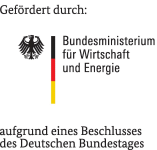The aim of the project is to take into account not only the design condition, as currently practised, but also the off-design conditions, as these occur in particular in waves and during manoeuvring, in the design as well as the hydrodynamic design of the propulsion and manoeuvring elements. This is also related to a more realistic off-design performance estimation.

| Title: | Ships in marginal seas in off-design situations – SiRiOS |
| Term: | 12/2021 – 05/2024 |
| Project Manager: | Kay Domke |
| Founding: | Ministry for Economic Affairs and Energy |
| Project administration: | EuroNorm GmbH |
| Reg.-No.: | 49MF210150 |
In this context, the recording of the resistance and propulsion characteristics as well as the rudder forces is to be extended from calm water conditions to the observation during manoeuvring and in waves. The scope of measurement data is to be increased, while at the same time reducing the size of the sea state model. In order to meet the requirements of these experiments, the influences of scale and Reynolds number must be taken into account which leads then to the limits of the test parameters.
Extensive experimental and numerical investigations are being carried out on a large-scale model (typical model scale for resistance and propulsion tests) and a seakeeping model to test the scaling laws and for validation. Especially for seakeeping tests it has to be investigated how the maximisation of the scale and the measurement value acquisition influence each other in order to be able to further provide a realistic performance estimation and to investigate the ship behaviour in waves. The spectrum of manoeuvring and seakeeping tests will be mapped as completely as possible with a simple simulation tool (programme modules from “Uthlande”), too.
The integration of different measurement concepts of the various types of tests into one model requires the establishment of contemporary design procedures with CAD assemblies and optimisation of the individual components with FEM.
For efficient test preparation (installation/removal and conversion), the standardisation of a test set-up has to be optimised, among other things by using special mechanical installations such as trim beams. To support this, a ‘motion compensation platform’ is modified into an inertial balance, which is used to check and determine the ship’s centre of gravity already in the non-floating preparation process, in order to prepare the trimming of the metacentric height more efficiently and thus to make the trimming process more time effective.
An important goal is to establish an experimental technology for measuring extensive data throughout the measurement run.
As a result, guidelines shall be developed which clarify the smallest possible model size at which still allows a huge spectrum of measured commponents. The possibility of providing additional measurement variables in standard experiments must be validated and communicated.